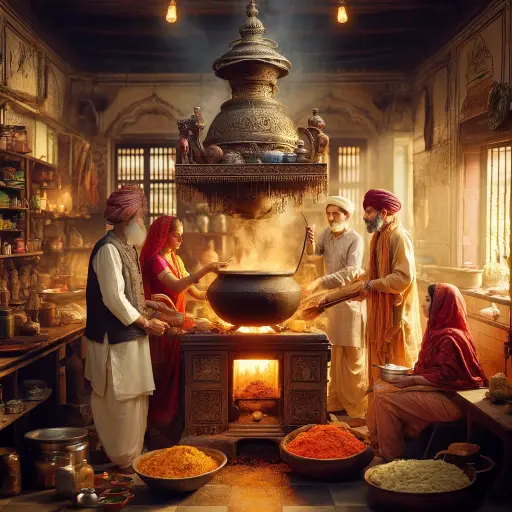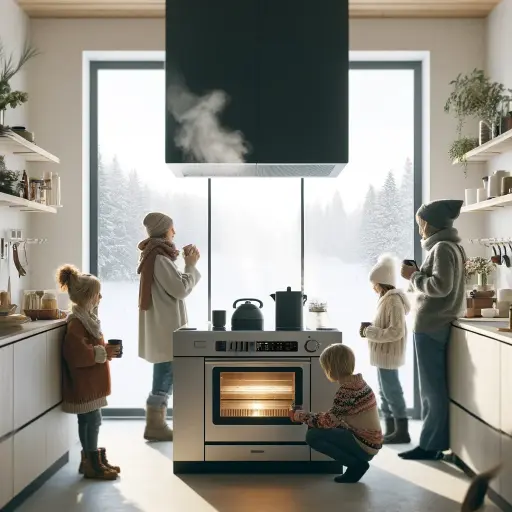Stoves as Cultural Catalysts: Shaping Culinary Traditions and Social Bonds
Updated: 12 May 2024
135

Beyond their functional role in preparing meals, stoves have played a profound cultural and social role in shaping culinary traditions and fostering connections among communities. From influencing what we eat to creating spaces for shared experiences, this exploration delves into how stoves have become more than just cooking appliances, becoming symbols of culture, tradition, and togetherness.
Stoves as Cultural Catalysts
1. Stoves: Culinary Time Machines
- Cultural Heritage: Stoves embody the evolution of culinary practices across generations, preserving traditions.
- Regional Flavors: Stove-cooked dishes often carry the distinctive flavors of a specific region, reflecting local ingredients and techniques.
2. Role of Stoves in Shaping Culinary Traditions

- Innovations in Technique: Stove technology has influenced cooking methods, leading to the creation of new dishes and culinary trends.
- Preserving Authenticity: Traditional cooking on stoves preserves authentic flavors and techniques, even in modern times.
3. Stoves as Cultural Symbols
- Iconic Dishes: Stove-prepared dishes like paella, tandoori, and stir-fries are synonymous with cultural identity.
- Celebrations: Stove-cooked dishes often take center stage in cultural celebrations and festivals.
4. Social Dynamics of Cooking and Eating Together
- Bonding Rituals: Cooking together around a stove fosters connections and strengthens family and community bonds.
- Cross-Generational Learning: Stove-side conversations pass down recipes, techniques, and cultural stories to younger generations.
5. Family Traditions and Stove-side Stories
- Recipe Heritage: Stove-cooked family recipes hold sentimental value, preserving memories of loved ones.
- Oral Tradition: Stories shared while cooking or eating around the stove contribute to oral traditions.
6. Stoves as Gathering Spaces
- Kitchen as Heart: The stove is often the heart of the kitchen, drawing people together during meal preparation.
- Hospitality: Guests gravitate toward the stove, where warmth and aromas create a welcoming atmosphere.
7. Cultural Exchange and Fusion
- Culinary Diplomacy: Sharing stove-prepared dishes facilitates cultural exchange, fostering understanding among diverse groups.
- Fusion Flavors: Cultural interactions lead to fusion cuisine, where stoves bring together flavors from different traditions.
8. Stoves and Community Events
- Feasting Together: Community events often involve stove-cooked feasts, reinforcing a sense of belonging.
- Street Food Culture: Stoves at street food stalls serve as platforms for authentic local flavors and social interactions.
9. Modern Interpretations and Trends

- Cooking Shows: Television and online platforms showcase stove-centric cooking shows, promoting traditional recipes and techniques.
- Cooking Classes: Stove-focused cooking classes provide opportunities to learn and embrace diverse cuisines.
10. Navigating Cultural Sensitivity
- Respecting Traditions: When exploring new cuisines, approach with cultural sensitivity to honor the significance of stove-cooked dishes.
- Learning from Locals: Engage with local communities to learn the authentic ways stoves are used in their culinary practices.
11. Embracing the Stove’s Social Magic
- Mindful Cooking: Approach stove-cooked meals as more than just sustenance, recognizing the cultural and social narratives they carry.
- Inviting Conversations: Share stories and engage in conversations while cooking, deepening connections with loved ones.
Conclusion
Stoves are catalysts that ignite not only culinary creativity but also cultural pride and social connections. They weave together traditions, flavors, and stories, uniting communities through shared meals and cherished memories. As we stand around stoves, cooking with passion and love, let’s acknowledge the role they play in shaping our identities, fostering relationships, and preserving the rich tapestry of human heritage that extends beyond the kitchen’s warmth.
Please Write Your Comments